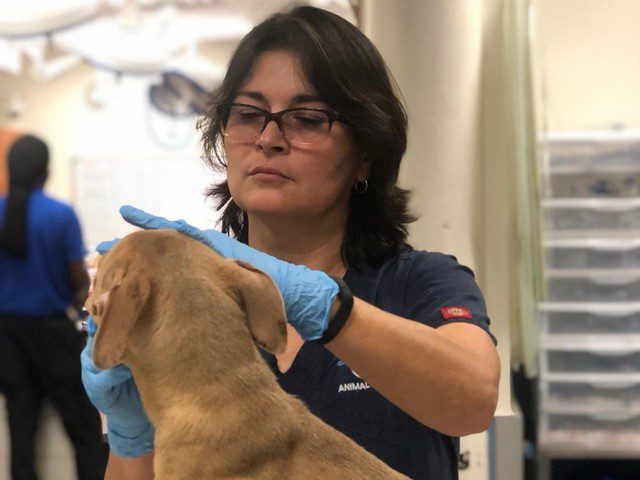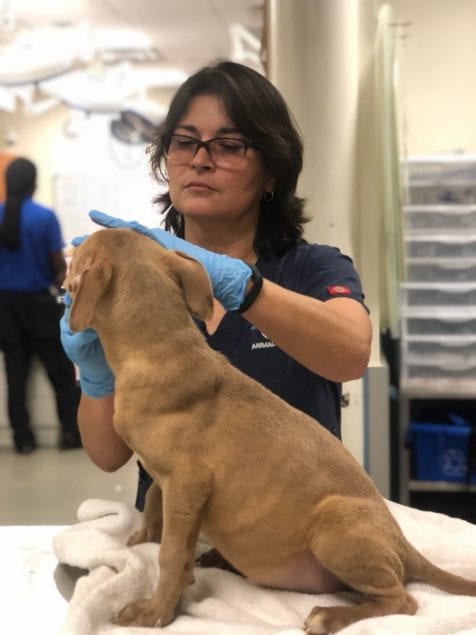Picture it: A dog catching your eye at the shelter, jumping, doggie kisses and trying to press its entire body against your legs. Children giggling with delight. Ideas for names flying around. Your new dog jumping into your car for the first time and heading home.
Then you get home and reality sets in. Your new dog has boundless energy. Your other dog gets territorial. You find yourself cleaning up some “accidents” on the new rug.
Bringing home a shelter pet is a joyful occasion, but it alsocan be challenging and each dog is unique. There are many articles with tips for how to introduce a new pet, but we wanted to shed more light on the unique transition from the shelter environment to the home.
Adoption is a serious long-term commitment, and those first few days are very important to the success of your relationship with your new pet and existing family.
The best friend who was there all along
I feel like I’ve seen so many movies where the lead actor is attracted to another person based on looks, but the best friend is the one he/she falls in love with at the end. What I tell people is to keep an open mind because all dogs are individuals regardless of breed, size or age.
The Pet Adoption and Protection Center in Doral takes in the abandoned and stray animals in our community, so we get a wide range of behaviors from calm to rough around the edges. Many animals previously had owners and were unfortunately “surrendered” to the shelter, while other dogs roamed the streets. We do our homework and document how dogs react in playgroups, during walks and in the clinic, to help you pick your new best friend.
This is going to sound obvious, but in addition to being willing to take on a long-term commitment, you must also like the dog. Chances are that you will like the dog more if it’s compatible with your lifestyle, and then everyone is happier.
Delayed gratification
Avoid the temptation to rush an introduction. We advise adopters to take baby steps because it typically leads to a better outcome. Think about it in terms of a child experiencing a sudden change such as switching schools. Some kids may or may not be comfortable with the change at first, and then take varying amounts of time to warm up to the new environment.
Dogs can’t talk. They can’t communicate what they like or what they are not comfortable with words, so it is up to you to take a toe in the water approach. Going slow means something different to everyone, but we recommend keeping the dogs separated in different areas of the home for a little while, or crate training can be a good way to take things slow, if done correctly. It’s better to be cautious at first instead of letting a brand new dog roam around at large in a new home with pets and family members.
Cool down period
We all know what the “ugh” feeling after a stressful day at work. Sometimes we need time to unwind so the stress or agitation doesn’t follow us home. That feeling is similar to the “overstimulation” we see in the dogs who have experienced extended stays at an animal shelter.
Shelter dogs get walked on a regular basis and go to play groups if they’re tolerant of other dogs, however, it’s not the same level of energy burn they would otherwise receive with an owner.
This natural doggie energy builds up pressure and sometimes tension. When you first come home with a shelter dog, take time to walk the dog around the block so the dog can blow off some steam, sniff around and get acclimated to new surroundings.
Switzerland
If you’re introducing an additional pet to your home, the location where pets are introduced can have a big impact on starting off on the right foot. Introduce dogs in a neutral area such as a park to level the playing field. Every dog may exhibit some level of possession or territorial issues around toys, homes or around their people.
Facilitating this introduction in a neutral area removes protective behaviors from the equation. Going for a “parallel walk” with leashes is a great way for introductions. The dogs can see each other and are not reacting, which helps to gradually bridge the gap. When dogs start to ignore each other and focus on the handler, it is a great opportunity to apply some positive reinforcement in the form of treats. And don’t forget that before the adoption, you can bring your current pet to an animal shelter for a test run.
Let dogs be dogs
People often treat dogs like human kids by squishing their cheeks and looking them directly in the eye. But don’t expect dogs to act like humans. It’s like people who are close talkers. It may be normal to them, but it creeps many other people out because it invades personal space.
For example, do not put your face in a newly adopted dog’s face until you’re absolutely confident the dog is comfortable with you. Some strategies include not making contact with the dog until it approaches you first for attention. Also, having a calm demeanor around dogs who are particularly nervous is helpful. Respecting the dog’s space is important to setting your new family member up for success.
We are just scratching the surface here. There is a lot going on in your dog’s head when introduced to a new home. Your veterinarian can also provide advice for the initial introduction and other tips for how to avoid your favorite shoes getting destroyed or preventing smelly accidents. Please follow AdoptMiamiPets for more useful pet-related tips.








